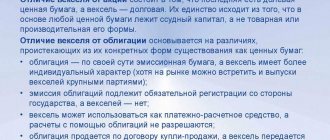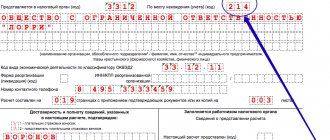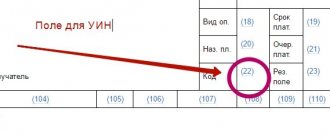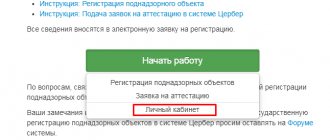Accounting legislation establishes the obligation of economic entities to document all facts of economic life, which, naturally, is reflected in the volume of document flow. However, any business strives to optimize all ongoing processes, in particular office work. In order to solve this problem, the Federal Tax Service of Russia began developing a universal document that could ease the bureaucratic burden. Thus, in 2013, businesses were given the opportunity to justify the VAT claimed for deduction and account for expenses for accounting and taxation purposes in one step - by issuing a universal transfer document. UPD has become an alternative to such forms as TORG-12, OS-1, M-15.
What is UPD?
A universal
transfer document
(UDD) is a form that simultaneously performs the functions of a primary accounting document and an invoice.
The Federal Tax Service has fixed the recommended form of the UPD. We repeat, the developed form is only recommended. This means that organizations have the right to modernize the UPD for their own convenience by adding the necessary indicators without violating the integrity of the document. The main thing is to fix the form in the accounting policy of the organization, and in the document itself - to indicate all the mandatory details for the primary documentation, in particular, the name of the form, the date of execution of the document, and the indication of the originator; content and transaction meter; indication of the persons responsible for processing the transaction (full name, position, signature).
The recommended UPD Form is one of the possible forms of a document on the transfer of goods (work, services) and property rights. The provisions of the letter of the Federal Tax Service of Russia dated October 21, 2013 N ММВ-20-3/ [email protected] determine that filling out all UTD details as mandatory for primary documents and details for invoices allows you to use it simultaneously for the purpose of calculating income tax and calculations for value added tax.
At the same time, the letter of the Federal Tax Service of Russia dated October 21, 2013 N ММВ-20-3/ [email protected] is not a normative legal act, does not amend or supplement federal legislation and does not contain an exhaustive list of indicators that can (should) be recorded by the parties when registering transactions transfer of goods (work, services), property rights, and does not limit the rights of business entities to use other forms of primary accounting documents and invoice forms.
Advantages and disadvantages of using invoices for an entrepreneur
Entrepreneurs using OSNO, even with VAT exemption, continue to issue invoices, and in such situations, the invoice increases the number of documents issued and the amount of work performed, thereby increasing the cost of time and paper. Due to the specific nature of production or trading activities, it can be convenient to separate primary and tax documents when issuing them. The downside to this is that documents may get lost.
Regarding the benefits of invoice
, then it is a legally established tax document used by companies and individual entrepreneurs when maintaining value added tax records.
If difficulties arise in matters of document flow, you can contact our accounting company and receive qualified advice.
When is UPD used?
Since this form is universal, it can be completed when performing fairly common operations, for example, when:
- Shipment of goods (purchase and sale agreement);
- Transfer of goods (commission agreement, instructions, agency agreement);
- Delivery of work (contract);
- Transfer of property rights.
Since the UTD acts as an invoice, the question arises about the possibility of its use by persons who are not VAT payers. Let's say right away that this is possible. The developers have provided the ability to assign a characteristic to a document, according to which its role is determined.
This sign is affixed by the person filling out the document in the upper left part. If a document is assigned the status “1”, then in this case this document combines the role of both the primary document and the invoice. Status “2” is assigned when an invoice is not required and the UPD serves only as a primary document. For example, this status should be indicated when applying special tax regimes, when the allocation of VAT from the transaction value is not required.
Which economic entities can use UPD
UTD can be used by any business entity.
The contract with the counterparty stipulates the fact of provision of UPD for goods supplied/services rendered/work performed.
Using the UPD is not an obligation; you can do it at your own discretion. Moreover, with some counterparties you can use UPD, and with others - invoices/acts and invoices.
As you know, simplifiers do not pay VAT, so they do not prepare invoices. If the simplifier issues an invoice with allocated VAT:
- he must pay VAT to the budget;
- submit a VAT return - only in electronic form;
- cannot accept for deduction VAT amounts invoiced by suppliers.
And yet, a simplistic person can set up a UPD and not receive such consequences. How to do it? For such cases, the UPD provides statuses 1 and 2.
How to start working with UPD?
You can start using UPD at any time during the year. You can use the UPD form proposed by the Federal Tax Service of Russia, or develop your own based on it, adding the necessary details or removing unnecessary ones.
If the recommended form works for you, please reconcile it with the current invoice form as changes have been made. Fix the UPD form in your accounting policy; if the recommended form does not suit you, develop your own UPD form similar to it. In terms of invoice details, your UPD must correspond to the current invoice form. Do not change the composition and sequence of details of the invoice itself. For example, you should not add new columns between columns 1 - 11, change the names of columns and lines, or delete invoice details.
Fix the UPD form that you will use in your accounting policy. Explain to your employees the procedure for filling out the UPD:
- who draws up the document and in how many copies;
- in what order, who fills out which fields of the document;
- within what period of time it is necessary to fill out certain fields of the document;
- what fields and how should the buyer's representatives fill in.
Indicate to employees from whom they can obtain clarification on issues that arise during the preparation of documents and during the delivery and acceptance of goods (work, services) to customers.
It is not necessary to warn counterparties about the use of UTD. As a rule, buyers do not object to UPD. If the document is drawn up correctly, there are no tax risks for them (Letter of the Federal Tax Service of Russia dated October 21, 2013 N ММВ-20-3/ [email protected] ). But buyers may have questions when filling out your UPD form or other difficulties. We recommend that you resolve all issues in advance - before you begin to arrange the shipment of goods (delivery of work, services).
You can include a clause on the application of the UPD in the contract. In this case, we recommend indicating how the UTD will be used: as an invoice and a primary document or only as a primary document.
The current legislation of the Russian Federation does not oblige the organization’s seal to be affixed to the UTD. You can stamp it as you wish. If you put a stamp that indicates your full name, then lines [14] and [19] of the UPD do not need to be filled in. The absence of a seal if all the required details are present in the UPD is not a violation, and also does not entail a denial of a deduction for a buyer under the UPD with status.
Electronic UTDs can be issued if the parties agree to their electronic exchange and have compatible technical means for this. UPD with status “1” is both a primary document and an invoice. And an electronic invoice can be issued only by mutual agreement of the parties if they have technical means (clause 1 of Article 169 of the Tax Code of the Russian Federation). UPD with status “2” is the primary accounting document. The exchange of primary electronic documents is not regulated by law. Since the buyer may not have the technical ability to process the seller’s documents, we recommend agreeing with the counterparty on the procedure for electronic document management, regardless of the UPD status. Consent to issuing electronic UPD can be issued in a similar way to consent to issuing electronic invoices: a clause in a contract, a separate agreement, by exchanging letters or in another way convenient for you. The electronic UPD must be compiled according to the Format approved by Order of the Federal Tax Service of Russia dated December 19, 2018 N ММВ-7-15/ [email protected]
UPD and SSF
Invoice is an NU document. It confirms the release of goods to the buyer, the provision of services to him, the performance of work on operations subject to VAT, and is not used anywhere else. SChF details contain information:
- about the subject of the transaction;
- about his country of origin;
- about the amount;
- on the quantitative characteristics of a business transaction;
- about the tax rate;
- about excise tax;
- about the relevant group of goods;
- allowing taxpayers to be identified.
Who issues invoices and when?
The information contained in the SSF is used for VAT calculations and control of these transactions. When registering the release of goods, an accounting document is attached to the SChF: delivery note, delivery and acceptance certificate, etc.
The Universal Transfer Document (UDD) is a form created on the basis of the SSF. All information from the SSF is reflected in the UPD. For convenience, the “invoice area” is highlighted with a dark outline. In addition, the UPD contains information on the issue of goods and materials (act, bill of lading, partially - TTN, document on issue of materials f. M-11, etc.), i.e. information when the shipment was made, which official took responsibility for it and signed it, and on the basis of which agreement the shipment was made.
How to reflect UTD in the purchase book, sales book, invoice journal?
UPD can be used both in BU and NU. The nature of use is marked with a number (1 or 2) - on the left side of the form, at the top:
- With status 1, the UPD acts as both an invoice and a document confirming the transfer.
- With status 2, the UPD is filled out only as a BU document.
It is obvious that SSF can be replaced by UPD with a simultaneous reduction in document flow. However, complete replacement in accounting practice does not occur. There are objective reasons for this.
When is UPD used?
Since this form is universal, it can be completed when performing fairly common operations, for example, when:
- Shipment of goods (purchase and sale agreement);
- Transfer of goods (commission agreement, instructions, agency agreement);
- Delivery of work (contract);
- Transfer of property rights.
Since the UTD acts as an invoice, the question arises about the possibility of its use by persons who are not VAT payers. Let's say right away that this is possible. The developers have provided the ability to assign a characteristic to a document, according to which its role is determined.
This sign is affixed by the person filling out the document in the upper left part. If a document is assigned the status “1”, then in this case this document combines the role of both the primary document and the invoice. Status “2” is assigned when an invoice is not required and the UPD serves only as a primary document. For example, this status should be indicated when applying special tax regimes, when the allocation of VAT from the transaction value is not required.
How to start working with UPD?
You can start using UPD at any time during the year. You can use the UPD form proposed by the Federal Tax Service of Russia, or develop your own based on it, adding the necessary details or removing unnecessary ones.
If the recommended form works for you, please reconcile it with the current invoice form as changes have been made. Fix the UPD form in your accounting policy; if the recommended form does not suit you, develop your own UPD form similar to it. In terms of invoice details, your UPD must correspond to the current invoice form. Do not change the composition and sequence of details of the invoice itself. For example, you should not add new columns between columns 1–11, change the names of columns and lines, or delete invoice details.
Fix the UPD form that you will use in your accounting policy. Explain to your employees the procedure for filling out the UPD:
- who draws up the document and in how many copies;
- in what order, who fills out which fields of the document;
- within what period of time it is necessary to fill out certain fields of the document;
- what fields and how should the buyer's representatives fill in.
Indicate to employees from whom they can obtain clarification on issues that arise during the preparation of documents and during the delivery and acceptance of goods (work, services) to customers.
It is not necessary to warn counterparties about the use of UTD. As a rule, buyers do not object to UPD. If the document is executed correctly, there are no tax risks for them (). But buyers may have questions when filling out your UPD form or other difficulties. We recommend that you resolve all issues in advance - before you begin to arrange the shipment of goods (delivery of work, services).
You can include a clause on the application of the UPD in the contract. In this case, we recommend indicating how the UTD will be used: as an invoice and a primary document or only as a primary document.
The current legislation of the Russian Federation does not oblige the organization’s seal to be affixed to the UTD. You can stamp it as you wish. If you put a stamp that indicates your full name, then lines [14] and [19] of the UPD do not need to be filled in. The absence of a seal if all the required details are present in the UPD is not a violation, and also does not entail a denial of a deduction for a buyer under the UPD with status.
Electronic UTDs can be issued if the parties agree to their electronic exchange and have compatible technical means for this. UPD with status “1” is both a primary document and an invoice. And an electronic invoice can be issued only by mutual agreement of the parties if they have technical means (clause 1 of Article 169 of the Tax Code of the Russian Federation). UPD with status “2” is the primary accounting document. The exchange of primary electronic documents is not regulated by law. Since the buyer may not have the technical ability to process the seller’s documents, we recommend agreeing with the counterparty on the procedure for electronic document management, regardless of the UPD status. Consent to issuing electronic UPD can be issued in a similar way to consent to issuing electronic invoices: a clause in a contract, a separate agreement, by exchanging letters or in another way convenient for you. The electronic UPD must be compiled according to the format approved.
Filling rules
The key rule for filling out the UTD is the need to display information about what document the form of the universal transfer document will be used as.
If the UPD is planned to be used as an invoice, the document status is indicated by the number “1”; if, as another primary payment document, the status of the UPD is indicated by the number “2”.
Based on what document the universal transfer document will be used for, the requirements for filling it out will vary, but some of them are universal:
- names of the parties to the transaction (information on both the seller and the buyer is indicated);
- description of the transferred goods (name or indication of article numbers);
- the number of units of goods transferred from the seller to the buyer (indication in pieces, packages or, if we are talking about work performed, square meters of such work or man-hours involved);
- information about the cost of the goods (the total cost, the amount of VAT to be paid, the cost excluding VAT are indicated in separate columns);
- information about the persons who released and accepted the transferred goods.
How to fix errors in UPD?
In the course of activities, situations inevitably arise when errors are made in the primary documentation. The procedure for adjusting the UPD is not standard and depends on many factors, since this is not a typical primary document.
| Status | Place | Character | Correction procedure | Features of the fix |
| 1 | SF and primary document | Prevents identification | It is mandatory to create a new document with status “1” | The number and date assigned before the adjustment are saved (line 1). The number and date of the correction are indicated (line 1a). Signed by authorized persons. |
| Does not interfere with identification | If necessary, a new document is created with status “2” | The number and date assigned before the adjustment are saved (line 1). The number and date of the correction are indicated (line 1a). Doesn't re-subscribe. | ||
| Primary document only | – | Let's accept the previous option or by direct editing | The correction in the original document is certified by the inscription “Corrected”, as well as the signature of authorized persons indicating the date of correction. | |
| 2 | Primary document only | – | Only by directly editing the document | The correction in the original document is certified by the inscription “Corrected”, as well as the signature of authorized persons indicating the date of correction. |
Please note that the nature of the error made in the document is determined from the point of view of a tax audit. Thus, identification is hampered by errors that distort information about the parties, the content or value of the transaction, the tax rate or the amount of tax.
Is it possible to issue UTD in foreign currency?
The question of the possibility of reflecting transactions denominated in foreign currency in the UTD may raise serious doubts and lead the company to a complete refusal to use this form. However, one of the advantages of UPD, for example, over the TORG-12 form is precisely in reducing the risks when reflecting such transactions. Accounting legislation stipulates that primary accounting documentation is filled out in Russian currency. The Ministry of Finance has a strong opinion on this matter. At the same time, tax legislation establishes that filling out an invoice in foreign currency is acceptable.
Taking into account both of these facts, in practice it was decided that filling out the UTD in foreign currency is acceptable. But at the same time, the form should be supplemented with information about the cost of the transaction in rubles. To do this, you can supplement the table with the necessary columns.
Advantages of UPD
The key advantage of using a universal transfer document is the ability to use it as various documents used in the implementation of trade turnover.
In addition, a universal transfer document can be used as a supporting document when submitting reports on income and taxes paid to the tax authorities.
A universal transfer document can also be used with various participants in economic legal relations due to the fact that it includes information used in various documents confirming transactions, and its form is included in almost all electronic accounting systems.
The universal transfer document was developed by the Federal Tax Service as a document that can be used by participants in tax legal relations and trade turnover to replace a large number of used transfer and payment documents.
In order for the UTD to meet the goals of its creation, it must be drawn up in accordance with the recommendations of the Federal Tax Service.
What is the purpose of a shipping invoice?
An invoice is the primary tax accounting document for VAT. Organizations and individual entrepreneurs are required to submit this document on the OSN, highlighting in it the amount of tax to be paid to the budget for this operation.
Business entities that have received tax exemption under Art. 145 of the Tax Code of the Russian Federation.
In turn, special regime officers, for example, persons using the simplified tax system, may refuse to issue invoices, except in cases where they carry out intermediary or import operations.
The buyer on the OSN requires a correct invoice with all the details in order to accept VAT for deduction. Therefore, sellers should approach the issuance of this document with the utmost care. Its form was approved by Government Decree No. 1137 dated December 26, 2011. Economic entities do not have the right to develop any of their own forms on the basis of this, otherwise the buyer will not be able to accept VAT for deduction, and this is precisely the main purpose of the invoice (Art. 169 of the Tax Code of the Russian Federation).
However, there is a document to replace the invoice - a universal transfer document. We'll talk about it in the next section.
What is the difference?
Despite the external similarity of the two forms, there are certain important differences between the papers. Invoice Features:
- Confirms the conclusion of a sale and purchase contract. VAT must be included.
- After the transaction, the shipper and recipient make an entry in the purchase journal. As a result, a tax benefit () is provided. The deduction saves considerable amounts, especially when purchasing in bulk.
- The document is filled out by hand and electronically in compliance with the basic requirements (). In case of sudden changes in value, an adjustment invoice is prepared.
Features of UPD:
- Combines primary documents such as delivery note and invoice. For this, additional necessary details are included ().
- If completed correctly, it will serve as the basis for deductions for fees on profit and added value.
- Varieties of UPD make it possible to combine or make additions. The graphs separated by black lines remain unchanged.
Until a code is assigned, the UPD cannot be sent electronically to the tax office . In 2021, amendments were made to the invoice and it was allowed to independently add columns for the contract identifier, code for the type of goods and signature of the person certifying the invoice for an individual entrepreneur to the simplified document.
Application difference
A universal transfer document (UDD) is a document that combines an invoice and a primary document. It can also only be used as a primary accounting document for recording various facts of economic life. However, it is not necessary to use the UPD. You can use it to simplify your document flow. After all, instead of an invoice and a primary document, you can issue one document - UPD. It entitles the buyer to deduct VAT by replacing the invoice.
About the procedure for filling out the UPD
Features of filling the UTD are determined by its multifunctionality. The letter from the Federal Tax Service contains detailed line-by-line recommendations for filling out the form (Appendix 3). It is worth noting that, in general, filling out the UPD should not cause serious problems. The document contains lines already familiar from other forms. For clarity, an example of filling out the form is shown in the figure below. Details that are required only for an invoice are marked in green, while details that are required for the primary document are marked in blue. The details required for both forms at the same time are highlighted in orange.
The part of the document highlighted in bold corresponds to the invoice, which is why this part is required to be filled out. It contains data about the participants in the transaction, information about the currency of the transaction, and the table reflects information about the content of the transaction. When adding or changing the form, the organization must take into account that in the area highlighted by the frame, it is allowed to enter information acceptable for reflection in the invoice.
The part under the frame in line 8 reflects information about the agreement concluded by the parties to the transaction. This indicator allows you to identify the content of the transaction, so it is considered mandatory details, despite the fact that it is outside the frame.
Line 9 reflects information about waybills and other accompanying documents. This information is not mandatory, but is for clarifying purposes only.
At the bottom of the UPD, the dates of delivery and acceptance are reflected, and information about the responsible persons is also filled in. The signature of these persons is required. In this case, stamps are affixed at the request of the parties. UPD without stamps is fully accepted for tax accounting.
Rules for filling out the UPD, which replaces the invoice and delivery note (or act)
In a universal transfer document with status 1, lines (1)-(7), as well as columns 1-11, must be filled out in the same way as in a regular invoice, that is, in accordance with Resolution No. 1137. Moreover, for line (2) “Seller” and lines (6) “Buyer” are provided with special features.
In the case of shipment of goods, sellers and buyers are understood to be the parties to the purchase and sale agreement or supply agreement (Chapter 30 of the Civil Code of the Russian Federation). If the seller is a commission agent, agent or attorney, then in line (2) the commission agent, agent or attorney must be indicated. If the goods are transferred to the carrier, in line 6 you need to indicate not the carrier, but the buyer.
When transferring property rights, lines (2) and (6) are filled in depending on the content of the transaction. If this is an alienation of an exclusive right, then the copyright holder and the recipient of the rights should be entered in these lines (Article 1234 of the Civil Code of the Russian Federation). If this is a licensing agreement, then the licensor and the licensee (Article 1235 of the Civil Code of the Russian Federation). In case of a commercial concession, the right holder and user are indicated (Article 1027 of the Civil Code of the Russian Federation), and when rights are transferred from a creditor to another person, the creditor himself, as well as the person to whom the rights are transferred (Article 382 of the Civil Code of the Russian Federation).
When providing services, lines (2) and (6) are also filled in based on the content of the transaction. If these are “simple” services, then in these lines you should indicate the contractor and the customer (Article 779 of the Civil Code of the Russian Federation), if this is a transport expedition, then the forwarder and the client (Article 801 of the Civil Code of the Russian Federation). In the case of a commission agreement, the commission agent and the principal are indicated (Article 990 of the Civil Code of the Russian Federation), in the case of an agency agreement - the agent and the principal (Article 1005 of the Civil Code of the Russian Federation), and in the case of a commission agreement - the attorney and principal (Article 971 of the Civil Code of the Russian Federation).
When transferring the results of completed work, the contractor or subcontractor must be named in line (2), and the customer or general contractor in line (6) (Article 702 of the Civil Code of the Russian Federation).
In the case where the commission agent purchased the goods on his own behalf, but in the interests of the principal, then when transferring the goods from the commission agent to the principal, lines (2) and (6) are filled in as follows. Line (2) indicates the third-party seller, and line (6) indicates the principal. These rules also apply to the situation when the agent transfers to the principal a product purchased for him from a third-party supplier.
Recommendations for filling out other UPD details are given in Table 1.
How to fix errors in UPD?
In the course of activities, situations inevitably arise when errors are made in the primary documentation. The procedure for adjusting the UPD is not standard and depends on many factors, since this is not a typical primary document.
| Status | Place | Character | Correction procedure | Features of the fix |
| 1 | SF and primary document | Prevents identification | It is mandatory to create a new document with status “1” | The number and date assigned before the adjustment are saved (line 1). The number and date of the correction are indicated (line 1a). Signed by authorized persons. |
| Does not interfere with identification | If necessary, a new document is created with status “2” | The number and date assigned before the adjustment are saved (line 1). The number and date of the correction are indicated (line 1a). Doesn't re-subscribe. | ||
| Primary document only | — | Let's accept the previous option or by direct editing | The correction in the original document is certified by the inscription “Corrected”, as well as the signature of authorized persons indicating the date of correction. | |
| 2 | Primary document only | — | Only by directly editing the document | The correction in the original document is certified by the inscription “Corrected”, as well as the signature of authorized persons indicating the date of correction. |
Please note that the nature of the error made in the document is determined from the point of view of a tax audit. Thus, identification is hampered by errors that distort information about the parties, the content or value of the transaction, the tax rate or the amount of tax.
In what cases can a universal transfer document be used?
Let us immediately make a reservation that the use of a universal transfer document is a right, not an obligation. In other words, taxpayers can refuse the UTD and, as before, fill out a separate invoice and a separate invoice or report.
For companies and entrepreneurs who decide to switch to a universal transfer document, two options are possible.
The first option implies that the UPD replaces both the invoice and the invoice or act. In this case, the universal transfer document simultaneously serves for VAT calculations and for recognizing expenses when taxing profits. Such a document is assigned status 1, which must be indicated in a specially designated field (it is located in the upper left corner of the form). A regular invoice is not needed for the first option.
At the moment, UPD with status 1 cannot be transmitted electronically. The fact is that such a document is an extended invoice, and invoices can be drawn up strictly according to the approved format. But the format for the universal transfer document has not yet been approved.
The second option implies that the UPD will replace only the invoice or act. In this case, the universal transfer document serves solely to recognize expenses in tax accounting. As for VAT calculations, they require a regular invoice. In the second option, the universal document is assigned status 2.
Despite the lack of format, UPD with status 2 can be transmitted electronically, like any unformalized primary document.
Please note: there is no option for the UTD to replace only the invoice. And although it was initially assumed, the Federal Tax Service of Russia subsequently ruled out this possibility.
Let us add that you can start using the UPD at any time.
Is it possible to issue UTD in foreign currency?
The question of the possibility of reflecting transactions denominated in foreign currency in the UTD may raise serious doubts and lead the company to a complete refusal to use this form. However, one of the advantages of UPD, for example, over the TORG-12 form is precisely in reducing the risks when reflecting such transactions. Accounting legislation stipulates that primary accounting documentation is filled out in Russian currency. The Ministry of Finance has a strong opinion on this matter. At the same time, tax legislation establishes that filling out an invoice in foreign currency is acceptable.
Taking into account both of these facts, in practice it was decided that filling out the UTD in foreign currency is acceptable. But at the same time, the form should be supplemented with information about the cost of the transaction in rubles. To do this, you can supplement the table with the necessary columns.
How tax authorities will check UPD
As part of the VAT audit
If the taxpayer presents a universal transfer document with status 1 as a basis for a VAT deduction, inspectors will first of all pay attention to lines (1)-(7) and columns 1-11. These fields must be filled out in accordance with paragraph 5 of Article 169 of the Tax Code of the Russian Federation.
In addition, tax authorities will make sure that the UPD is signed according to the rules set out in paragraph 6 of Article 169 of the Tax Code of the Russian Federation. And on the document drawn up by the entrepreneur, next to his signature there are details of the state registration certificate. Only in this case will the organization or entrepreneur receive the right to deduction.
However, we should not forget that errors that do not prevent the identification of the seller, buyer, name of goods (work, services), their cost, rate and amount of tax are not grounds for refusal of a deduction (Clause 2 of Article 169 of the Tax Code of the Russian Federation).
Results
Thus, the UPD is a universal document that allows you to reduce the company’s document flow by half. Currently, there is a sufficient number of clarifications from the Federal Tax Service of Russia on the use of UTD, and therefore the risks of controversial issues are insignificant. The material collected in the article reflects the main issues that arise in the process of using this document. We hope that it will be useful both to companies that are just thinking about switching to using UPD, and to long-time users of this form.
Firmmaker, June 2020 Elizaveta Karpuk When using the material, a link is required









